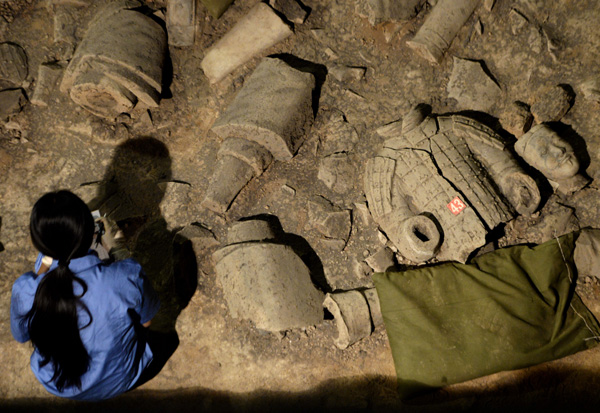 |
| An archaeologist works on an excavation site of terracotta warriors in Xi’an April 30, 2015.[Photo/Xinhua] |
Archaeologists have employed digital scanning in the ongoing excavation of a burial pit in the ancient capital of Xi'an, where an army of Terracotta Warriors guards the mausoleum of China's first emperor.
China launched a second excavation project on Thursday on Pit No 2, located near the tomb of Emperor Qinshihuang, founder of the Qin Dynasty (221-206 BC). The pit saw the unusual discovery of colorful statues during the first excavation between 1994 and 2008.
Zhu Sihong, who leads the excavation team, said advanced technologies will play a greater role in the second excavation.
The team will use digital scanning to collect data on artifacts and build a database, which will facilitate future research, Zhu said.
Scientists have estimated that the pit has 1,400 clay figures and horses and 89 chariots waiting to be unearthed. Though smaller than Pit No 1 in scale, the second pit features a mixed terracotta troop of chariots, cavalry and archers.
Pit No 2 is also famed for the unearthing of several colorful warriors, including a rare specimen with a green face, indicating that the army was once painted various colors that faded throughout the ages.
Located in Xi'an in Shaanxi province, the 56-sq-km Mausoleum of Qinshihuang is the world's largest underground mausoleum. An army of more than 7,000 life-size Terracotta Warriors and horses was discovered at the site in 1974.
The first excavation began on Pit No 2 in 1994 and was halted in 2008 due to a lack of personnel and advanced protective technology.
